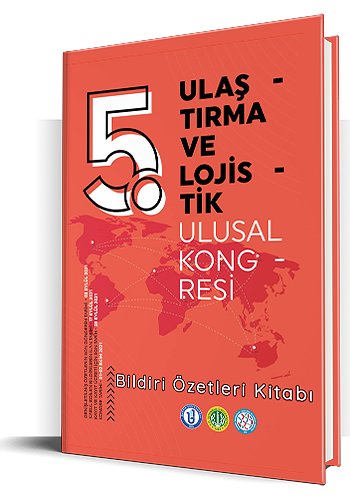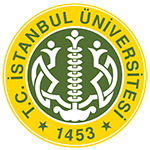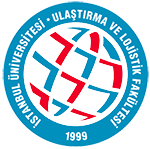
Ulaştırma ve Lojistik Kongreleri
- Türkçe
- Özet
- 2021
Moda Endüstrisinde Sürdürülebilir Lojistik Uygulamaları
Saliha Karadayı Usta
Dr. Öğr. Üyesi, Fenerbahçe Üniversitesi, İstanbul, Türkiye
Tekstil lojistiği ülkemizde yoğun şekilde hizmet göstermekte olup, kullanılan hammaddelerin ve hazır giyimin depolandığı, paketlendiği ve taşındığı bütünleşik bir süreçtir. Hızlı moda akımının ve dijitalleşmenin ivmelenmesi ile birlikte talepte ciddi bir yükseliş gerçekleşmiş, kıyafet üretimini de aynı doğrultuda tetiklemiştir. Hızlı moda akımı ile neredeyse her hafta çıkan yeni koleksiyonlarla çok çeşitli tüketiciye hitap etmek bir amaç haline gelmiş, hammadde ve son üründe çeşitlilik artmış, bu da ürünlerin sınıflandırılmasını ve paketlenmesini güç hale getirmiş, nihayetinde tekstil lojistiği de ilgili talebi karşılamada önemli bir rol kazanmıştır. Diğer bir yandan, içinde bulunduğumuz küresel iklim krizi ise, moda endüstrisine hizmet veren lojistik firmalarının sürdürülebilir ve çevre dostu uygulamaları benimsemesini, karbon emisyonunu en aza indirmesini hatta karbon nötr olmasını, atık yönetiminde geri dönüşümü üst seviyelere taşımasını, tek kullanımlık plastik ambalajlamadan kesinlikle uzak durmasını gerektirmektedir. Dolayısıyla bu çalışmanın amacı, 2017-2021 yılları arasında Scopus veri tabanında yayınlanan moda / tekstil / giyim endüstrisi literatüründe bibliyometrik analiz yoluyla sürdürülebilir lojistik alanında öne çıkan kavramları tespit etmek, elde edilen ağ diyagramları ile bu kavramlar arası ilişkileri görselleştirmek, kavramların detaylarını örnek uygulamalarla ve çeşitli vakalar ile desteklemektir. Bibliyometrik analiz bulguları incelendiğinde; 1027 anahtar kelimenin analizi ve birlikte gerçekleşme durumlarını dikkate alarak kümelenmesi sonucunda, bu konuda öne çıkan çalışmaları şu şekilde sınıflamak mümkündür: (i) lojistik sektöründe etik ve adil çalışma koşulları kapsamında tedarik zincirinde zamanında yapılan ödemeler ve kişisel koruyucu ekipmanlar ile mesleki maruziyet durumlarından kaçınarak çalışanların sağlığını ve ekonomik refahını sağlama, (ii) lojistikte sürdürülebilirliğinin önündeki engeller, özellikle güncel etkileri bakımından salgın hastalıkların beraberinde getirdiği riskler, (iii) şehir lojistiği ile yeniden kullanım veya geri dönüşüm için tekstil ürünlerinin toplanması, döngüsel ekonominin ve tersine lojistiğin sağlanması, (iv) kullanılan araç ve yakıt tipinde ekolojiyi koruyan tercihler, iklim krizi ve hava kirliliğinin aşılması için karbon emisyonunun azaltılması, (v) inovasyon ve e-ticaretin etkilerini karşılamada otomatik depolama sistemlerinden faydalanma ve Lojistik 4.0’ın benimsenmesi. Yapılan bu analiz sonucunda ön plana çıkan yayınların ve vaka çalışmaları ayrıca incelenmiş, örnek uygulamalar sunulmuştur. Buna göre; (i) Lojistik sektöründe etik ve adil çalışma koşullarının sağlanması için Reysaş, Omsan ve Ekol Lojistik gibi firmaların etik kurallar tanımladığı mevzuatlar ile kurum çalışanlarını, yöneticilerini, sektörü, çıkar çatışmalarını, sosyal ve çevresel sorumluluklarını, şirket varlıklarını ve doğru kullanılmasını, kamuyu aydınlatma esaslarını dikkate alan yaptırımları bulunmaktadır. (ii) Tekstil lojistiğinde sürdürülebilirliğinin önündeki engelleri / riskleri aşmak için firmalar ISO 14001-2004 Çevre Yönetim Sistemi’ni benimsemekte, Euro Emisyon Standartları gibi lojistik sürdürülebilirliğine dair standartları taşıyan partnerler ile çalışmaktadır. Özellikle Eco Performans ödülü ile başarılı sürdürülebilirlik çabaları uluslararası çapta takdir edilmektedir. (iii) Şehir lojistiği ile yeniden kullanım veya geri dönüşüm için tekstil ürünlerinin toplanması noktasında tüketiciler aktif rol almaktadır. Örneğin, hemen hemen her belediyenin ve çeşitli derneklerin şehir içinde konumlandırdığı tekstil atık kumbaraları ile kullanılmayan kıyafetler toplanmakta, ilgili kurumlar tarafından işleme alınmaktadır. Ayrıca, Feen gibi mobil uygulamalar ile de tekstil bağışı yapmak mümkün hale gelmiştir. (iv) Kullanılan yakıt tipinde ekolojik tercihlere örnek olarak metanol, etanol, metan, biyodizel, hidrojen, elektrik ve hibrit araçlar öne çıkmaktadır. Kyoto Protokolü gereğince karbon emisyonunun düşürülmesi için trafiğe yeni sunulan araçlarda yakıt tüketimini azaltıcı tedbirler alınmakta, daha az sera gazı salınımı olan yakıtların kullanımı desteklenmekte, düzenli trafiğin sağlanması amacıyla trafik akışının yeniden düzenlenmesine gidilmektedir. (v) İnovasyon ve e-ticaretin etkilerini karşılamada otomatik depolama ve boşaltma sistemlerine örnek olarak AS/RS gösterilmekte, sektörde Mecalux, Üçge DRS ve Temesist gibi hizmet sağlayıcılar dikkat çekmektedir. Çalışma hem literatürü ortaya koyarak hem de sektörel uygulamaları ve örnekleri inceleyerek moda endüstrisi ilgililerine fikir vermekte, sektör yetkililerine ve tüketicilere farkındalık kazandırarak katkı sağlamaktadır.
Anahtar Kelimeler: Yeşil Lojistik, Moda Endüstrisi, Sürdürülebilir Lojistik, Bibliyometrik Analiz, Vaka Analizi
Sustainable Logistics Practices in Fashion Industry
Textile logistics serves extensively as an integrated process in which raw materials and ready-made clothing are stored, packaged and transported in our country. With the acceleration of fast fashion and digitalization, there has been a serious increase in demand, triggering the production of clothing in the same direction. The fast fashion trend has created an aim to appeal to a wide variety of consumers with new collections coming out almost every week, next the diversity in raw materials and end products has increased, then this has made the classification and packaging of products difficult, and finally, textile logistics has gained an important role in meeting the relevant demand. On the other hand, the global climate crisis requires logistics companies serving the fashion industry to adopt sustainable and environmentally friendly practices, to minimize carbon emissions and even to be carbon neutral, to maximize recycling in waste management, and to stay away from single-use plastic packaging. Therefore, the aim of this study is to identify the prominent concepts in the field of sustainable logistics through a bibliometric analysis in the fashion / textile / clothing industry literature published in the Scopus database in between 2017-2021, to visualize the relations between these concepts with the obtained network diagrams, to present the details of the concepts with examples, and to support them with various cases. The bibliometric analysis findings as a result of clustering by taking into account the situations of co-occurrence of 1027 keywords, it is possible to classify the prominent studies on this subject as follows: (i) within the scope of ethical and fair working conditions in the logistics sector, timely payments in the supply chain, and personal protective equipment and occupational exposure are possible. (ii) barriers to sustainability in logistics, especially in terms of the current effects, the risks brought by the pandemics, (iii) the collection of textile products for reuse or recycling with city logistics, actualizing the circular economy and reverse logistics, (iv) ecology-protecting choices in the type of vehicle and fuel used, reducing carbon emissions to overcome the climate crisis and air pollution, (v) utilizing automated storage systems to meet the impacts of innovation and e-commerce, and the adoption of Logistics 4.0. As a result of this analysis, prominent publications and case studies were also examined and examples were presented. According to this; (i) In order to ensure ethical and fair working conditions in the logistics sector, companies such as Reysaş, Omsan and Ekol Logistics take into account the regulations that define ethical rules and the principles of public disclosure for their employees, managers, industry, conflicts of interest, social and environmental responsibilities, company assets and their correct use. (ii) In order to overcome the obstacles/risks against sustainability in textile logistics, companies adopt the ISO 14001-2004 Environmental Management System and work with partners that carry standards on logistics sustainability such as Euro Emission Standards. Successful sustainability efforts are recognized internationally, especially with the Eco Performance award. (iii) Consumers take an active role in the collection of textile products for reuse or recycling by urban logistics. For example, unused clothes are collected and processed by the relevant institutions with the textile waste boxes located in the city by almost every municipality and various associations. In addition, it has become possible to donate apparels with mobile applications such as Feen. (iv) Examples of ecological preferences in the type of fuel used are methanol, ethanol, methane, biodiesel, hydrogen, electricity and hybrid vehicles. In order to reduce carbon emissions in accordance with the Kyoto Protocol, measures are taken to reduce fuel consumption in newly introduced vehicles by using the fuels with less greenhouse gas emissions, and traffic flow is reorganized in order to ensure regular traffic. (v) AS/RS is shown as an example of automatic storage and unloading systems in meeting the effects of innovation and e-commerce, and service providers such as Mecalux, Üçge DRS and Temesist draw attention in the sector. The study gives ideas to those who are interested in the fashion industry by both revealing the literature and examining sectoral applications and examples, and contributes to raise awareness to sector representatives and consumers.
Keywords: Sustainable Logistics, Bibliometric Analysis, Green Logistics, Fashion Industry, Case Study


Bu çalışma, kullanan kişilere orjinal çalışmadan alıntı yaptıkları sürece, çalışmayı dağıtma, değiştirme ve üzerine çalışma hakkı tanıyan Attribution 4.0 International (CC BY 4.0) lisansı ile lisanslanmıştır.
İletişim
İstanbul Üniversitesi Ulaştırma ve Lojistik Fakültesi
İ.Ü. Avcılar Kampüsü 34320 Avcılar/İstanbul
ulk@istanbul.edu.tr
+ 90 (212) 440 00 00 - 19200


